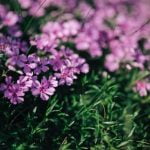Planting ideas for large gardens involve a creative process that showcases the beauty and endless possibilities of expansive outdoor spaces. With ample room to experiment and innovate, large gardens provide the perfect canvas for creating breathtaking landscapes that can be both visually stunning and functional. From lush greenery to vibrant blooms, these gardens offer a chance to design an oasis that reflects personal style and preferences while enhancing the overall appeal of the property.
When it comes to designing a large garden, careful planning and thoughtful consideration are essential. The layout should be strategically mapped out to ensure a cohesive and harmonious flow throughout the space, taking into account factors such as sunlight exposure, drainage patterns, and existing structures. By incorporating elements like pathways, seating areas, and focal points, one can create an inviting environment that beckons exploration and relaxation.
Choosing the right plants is crucial in transforming a large garden into a thriving botanical paradise. From trees to shrubs, flowers to vegetables, each selection plays a vital role in shaping the overall look and feel of the landscape.
By combining different textures, colors, and heights, one can create visual interest and dynamic contrast within the garden beds. Additionally, considering factors such as growth habits, maintenance requirements, and seasonal changes will help ensure a balanced and sustainable plant selection for long-term enjoyment.
Planning and Design
When it comes to planning and designing a large garden, there are several key factors to consider in order to create a cohesive and visually appealing layout. One of the first steps in the planning process is to map out the different areas of your garden, taking into account factors such as sunlight exposure, soil quality, and drainage. This will help you determine where to place different features and plants within your garden.
Utilize Zones for Functionality
In order to make the most of a large garden space, consider dividing it into separate zones based on functionality. For example, you could have a relaxation zone with seating areas and water features, a vegetable garden zone for growing your own produce, and a play area for children or pets. By creating distinct zones within your garden, you can maximize both its visual appeal and its overall functionality.
Consider Scale and Proportion
Another important aspect of designing a large garden is considering scale and proportion. Choose plants, trees, shrubs, and hardscape elements that complement the size of your garden space. Avoid overcrowding by giving each plant or feature enough room to grow and thrive. Additionally, varying heights and shapes throughout the garden can add visual interest and depth to the overall design.
Create Focal Points
To create visual interest and draw the eye towards specific areas of your large garden, incorporate focal points such as statues, arbors, pergolas, or even specimen trees. These focal points can help break up the expanse of greenery in your garden and provide landmarks for visitors to admire as they explore the space.
Whether it’s a stunning flower bed at the center of your garden or a cozy seating area tucked away in a corner, these focal points can enhance the overall design of your large outdoor space.
Plant Selection
When it comes to planting ideas for large gardens, choosing the right plants is crucial to create a beautiful and harmonious outdoor space. With ample room to work with, gardeners have the opportunity to showcase a diverse range of plant species, from towering trees to delicate flowers. Here are some tips for selecting the perfect plants for your large garden:
- Consider the climate and soil conditions: Before selecting any plants for your large garden, it’s important to consider the climate and soil conditions of your area. Choose plants that thrive in your specific environment to ensure they will flourish and grow well.
- Plan for variety: Large gardens provide the perfect canvas for showcasing a wide variety of plant species. Mix and match different types of plants, such as flowering shrubs, ornamental grasses, and perennials, to create visual interest and texture throughout your garden.
- Think about maintenance: When choosing plants for your large garden, consider the amount of maintenance each plant requires. Opt for low-maintenance varieties if you prefer a more hands-off approach to gardening, or be prepared to dedicate time to caring for high-maintenance plants.
Incorporating a mix of trees, shrubs, flowers, and other greenery can help create balance and harmony in a large garden space. By carefully selecting plants that complement each other in terms of size, color, and growth habit, you can create a stunning outdoor landscape that is both visually appealing and inviting.
Trees and Shrubs
Large gardens provide ample space to showcase a diverse range of trees and shrubs, creating a lush and inviting landscape. When considering which trees and shrubs to plant in a large garden, it is essential to take into account factors such as the climate, soil conditions, and overall design aesthetic.
One popular idea for incorporating trees into a large garden is to create focal points with majestic specimens like oak or maple trees. These trees not only add height and structure to the garden but also provide shade and habitat for wildlife.
Shrubs are another essential element in large garden design, offering color, texture, and definition to different areas of the landscape. For large gardens, consider planting groupings of shrubs in varying heights to create depth and visual interest.
Evergreen shrubs like boxwood or juniper can provide year-round greenery, while flowering shrubs such as hydrangeas or azaleas add bursts of color during the blooming season. Mixing different types of shrubs can create dynamic compositions that evolve throughout the seasons, adding vibrancy to the garden.
In addition to aesthetics, trees and shrubs play functional roles in a large garden by providing privacy screening, windbreaks, and noise reduction. When selecting trees and shrubs for a large garden space, it is important to consider their mature size and growth habits to ensure they have enough room to flourish without becoming overcrowded.
By carefully planning the placement of trees and shrubs in a large garden design, you can create a harmonious landscape that celebrates nature’s beauty while enhancing the overall appeal of your outdoor space.
| Large Garden Trees | Large Garden Shrubs |
|---|---|
| Oak Trees | Boxwood |
| Maple Trees | Juniper |
| Magnolia Trees | Hydrangeas |
Flower Beds and Borders
When it comes to designing a large garden, creating vibrant and colorful flower beds and borders can significantly enhance the overall aesthetics of the space. One key aspect to keep in mind is selecting a variety of plants that bloom at different times throughout the year to ensure continuous color and visual interest. Consider incorporating a mix of annuals, perennials, and flowering shrubs to create a dynamic and ever-changing display.
In addition to choosing a diverse range of flowering plants, it’s essential to pay attention to the layout and design of your flower beds and borders. For a cohesive look in a large garden, aim for symmetry or balance in your planting scheme. You can create focal points by grouping together plants with similar colors or contrasting textures. Experiment with different heights, shapes, and plant combinations to add depth and dimension to your flower beds.
Another important factor to consider when creating vibrant flower beds in a large garden is proper maintenance and care. Regular watering, pruning, weeding, and fertilizing are critical for ensuring that your plants thrive and continue to bloom abundantly.
Also, be mindful of the sunlight conditions in different areas of your garden when selecting plants for your flower beds – make sure they receive adequate light exposure based on their specific needs. By implementing these planting ideas for large gardens, you can transform your outdoor space into a colorful oasis that brings joy year-round.
Vegetable and Herb Gardens
Large gardens offer a fantastic opportunity to delve into the world of vegetable and herb gardening on a grand scale. Whether you are a seasoned gardener or just starting out, there are plenty of planting ideas for large gardens that can help you create a productive and bountiful vegetable and herb garden. Here are some tips to help you plan and plant your own vegetable and herb garden in a large space:
- Start by selecting a sunny spot in your garden that receives at least 6-8 hours of sunlight each day. Vegetables and herbs thrive in full sun, so choosing the right location is crucial for their growth.
- Consider creating raised beds or containers for your vegetable and herb garden in a large space. This not only helps with drainage but also makes it easier to maintain and harvest your crops. Raised beds can also help define separate areas for different types of vegetables.
- When planning your vegetable and herb garden layout, make sure to consider the spacing requirements of each plant. Some vegetables, such as tomatoes and squash, require more room to grow, while herbs like basil and cilantro can be planted closer together.
Incorporating a variety of vegetables and herbs in your large garden can not only add visual interest but also provide you with fresh produce throughout the growing season. From tomatoes, peppers, and cucumbers to basil, thyme, and parsley, the options are endless when it comes to planting ideas for large gardens dedicated to vegetables and herbs.
With some careful planning and thoughtful design, you can create a thriving vegetable and herb garden that will bring joy and flavor to your outdoor space for years to come.
Hardscaping
Paths and Walkways
When designing a large garden, pathways and walkways play a crucial role in not only providing access to different areas but also in enhancing the overall aesthetics of the space. Consider using materials such as gravel, flagstone, or brick to create paths that blend seamlessly with the natural surroundings. Curving pathways can add visual interest and lead guests on a delightful journey through your garden. Incorporating lighting along paths can also create an enchanting atmosphere for evening strolls.
Patios and Outdoor Living Spaces
To fully enjoy your large garden, consider adding patios or outdoor living spaces where you can relax and entertain guests. When selecting materials for patios, opt for durable options like concrete pavers or natural stone that can withstand the elements. Position seating areas strategically to take advantage of views or create cozy corners for intimate gatherings. Installing pergolas or arbors can provide shade and structure to outdoor spaces while adding vertical interest with climbing plants like vines or roses.
Water Features and Garden Structures
Integrating water features like fountains, ponds, or streams into your large garden can add a sense of tranquility and drama to the landscape. The sound of flowing water can mask nearby noises and create a serene ambiance. Additionally, consider incorporating garden structures like gazebos, trellises, or archways to anchor different areas within the garden and provide support for climbing plants. These structures not only serve practical purposes but also contribute to the architectural beauty of the overall design.
By carefully planning and incorporating hardscape elements into your large garden design, you can create an outdoor oasis that is both functional and visually appealing. Whether it’s creating meandering pathways, inviting outdoor living spaces, or adding captivating water features, hardscaping allows you to transform your expansive garden into a harmonious blend of nature and artistry. Let these ideas inspire you as you embark on the journey of turning your large garden into a paradise of possibilities.
Maintenance and Care
Large gardens can be a breathtaking canvas for creativity and beauty, but they also come with the responsibility of maintenance and care to ensure they look their best year-round. When it comes to maintaining a large garden, strategic planning and consistent upkeep are key. From regular watering and fertilizing to pruning and weeding, there are several strategies that can help keep your expansive outdoor space in top condition.
One important aspect of maintaining a large garden is staying organized with a detailed schedule. By creating a calendar that outlines tasks such as watering, fertilizing, pruning, and pest control, you can ensure that each aspect of your garden receives the attention it needs at the right time. Additionally, keeping track of when specific plants bloom or produce fruit can help you anticipate upcoming maintenance needs and plan accordingly.
Another essential part of caring for a large garden is investing in quality tools and equipment. From sturdy shovels and pruners to efficient irrigation systems, having the right tools on hand can make maintenance tasks easier and more effective.
Regularly sharpening blades, cleaning tools after use, and storing them properly can also extend their lifespan and ensure they perform optimally when needed. By being proactive in caring for your tools, you’ll be better equipped to tackle any maintenance challenges that arise in your large garden.
Conclusion
In conclusion, large gardens offer endless possibilities for creating stunning outdoor spaces that reflect the creativity and vision of the gardener. By carefully planning and designing the layout, selecting the right plants, incorporating trees and shrubs, creating vibrant flower beds, planting productive vegetable and herb gardens, adding hardscape elements, and maintaining with care – a beautiful garden can truly come to life.
It is essential to remember that gardening is an art form and an expression of oneself. With the right tools and knowledge, anyone can transform their large garden into a breathtaking oasis. Whether you have a green thumb or are just starting out, planting ideas for large gardens are just waiting to be discovered and brought to life in your own backyard.
So, let your imagination run wild as you embark on this journey of turning your large garden into a personal sanctuary. Unleash your creativity, experiment with different plant combinations, and watch as your outdoor space transforms into the garden of your dreams. Remember, there are no limits when it comes to gardening – only endless opportunities for growth and beauty.
Frequently Asked Questions
What Do You Fill a Large Garden Planter With?
A large garden planter can be filled with a combination of soil, compost, and perlite for proper drainage and moisture retention. You can also add in slow-release fertilizer to provide nutrients for the plants throughout the growing season.
How Do You Arrange Plants in a Large Planter?
When arranging plants in a large planter, consider the height, color, and texture of each plant to create an aesthetically pleasing display. Place taller plants in the center or back of the planter, with shorter plants around the edges or front to ensure all plants receive adequate sunlight.
What Plants Go in a Large Planter?
Various types of plants can go in a large planter, depending on your preferences and climate conditions. Consider mixing different types of flowers, grasses, herbs, or even vegetables to create a diverse and visually appealing planter arrangement. Just make sure all selected plants have similar sun and water requirements for optimal growth.

Welcome to my gardening blog! I am passionate about plants and enjoy sharing my knowledge and experiences with others. In this blog, I will write about everything related to gardening, from tips on how to get started to updates on my own garden projects.





